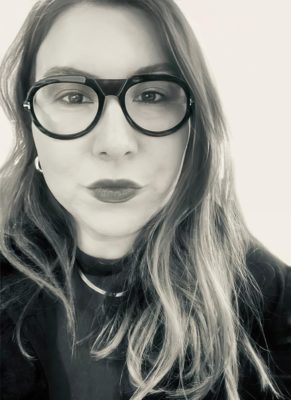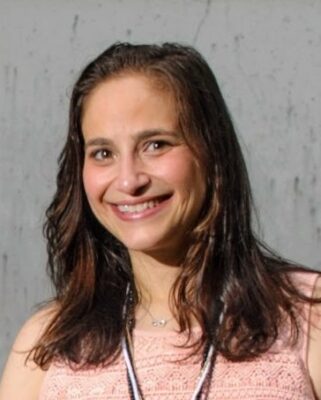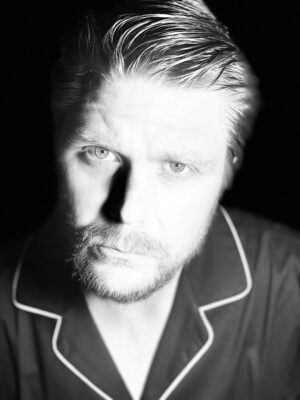Working in the Arts: From Boutique to Blue Chip, moving from a small team to a large business can be intimidating, and feel well beyond your comfort zone if you don’t have that experience. We caught up with Celia Kinchington who made that move on a grand scale, to hear how she handled this transition, and how her boutique background has made her invaluable in a mega gallery.
So, where do you work?
I work for White Cube, a commercial art gallery with locations around the world. I am based at the gallery’s headquarters in Bermondsey, London.
What is your job title?
Compliance and Process Analyst – Finance
What are your key tasks?
Client due diligence checks – in 2020, The EU Fifth Money Laundering Directive (5MLD) introduced changes which brought art market participants (AMPs) into the scope of the Anti-Money Laundering legislation, making it a legal requirement to complete KYC checks on all transactions over 10,000 EUR.
What was your career path to this role?
After I finished art school, my first step into the art world was to complete an internship at White Cube. I actually interned with the IT director who was developing a bespoke inventory program, my role was to learn how to use it and write a manual. This gave me an amazing insight into how the business of an art gallery actually worked – from consignments in and basically the flow of artworks through the gallery and how artworks are tracked and located throughout the whole gallery ecosystem.
After I completed my internship, I had the opportunity to join Tracey Emin studio as an assistant. It was incredible to be just out of art school and able to work for one of U.K.’s most important artists. It was an exciting time as she was working towards two solo shows one in NY & in London, When I Think About Sex…, White Cube, London (2005). She had also just released a film which she had written & Directed, Topspot (2004). She was even asked by Longchamp to collaborate on a collection to celebrate the line’s 10-year anniversary. I remember being shocked to see how many requests came through to the studio every day! Even though she was so busy she found time to curate a show by her assistants, ‘Group Sex Group Show’ Curated by Tracey Emin (2005). She came to our studios and looked at our work. She’s a natural teacher and a champion of those around her and it doesn’t surprise me that she has now founded TKE Studios which provides artist studios, exhibition, lecture and gallery spaces.
The next big-ticket item on my CV would be the 10 years that I spent with the Cynthia Corbett Gallery; a private boutique gallery based in South West London. I think the major benefit of working for a smaller gallery is that you have the opportunity to do everything – you are the Registrar, IT person, Artist Liaison, Accounts and first point of contact. You coordinate press requests, as well as installing exhibitions, travelling to art fairs, meeting clients and making sales. This was a crucial time for the gallery as it expanded. The Director somehow also found time to launch the ‘Young Masters Art Prize’, and later add a ceramics prize to the umbrella. It’s a huge privilege to see some of our YM artists really making their mark on the artworld – an obvious example is Flora Yukhnovich, who took part in a touring exhibition organised in 2017. Let’s just say that it was a lot of work and a lot was thrown at me. It was a very stressful time in my life, but looking back I learnt an incredible amount about myself and just how capable, versatile, and how hard-working I am especially under pressure!
What are the best and worst things about your job?
Aside from the CDD (Customer Due Diligence) aspect of my time I also do a lot of training with the sales admins which I enjoy, I speak with them throughout the day, fielding questions or advising next steps, or who to contact between departments. We are a large organisation and so certain projects or sales will require input from Finance / Legal / Technical / Registrars; we are collaborative and I always recommend picking up the phone and having a conversation rather than relying on emails as it’s important that whoever is the point person has a full picture of what’s needed so we can avoid surprises down the line.
The worst thing I would say is the feeling of not having any time, and although it’s a good thing that we’re busy, constantly playing catch up while trying to keep on top of a really busy inbox can be a bit stressful.
You were the Associate Director of a boutique private gallery and not-for-profit prize, so overseeing the entire operation, and now you’re a specialist in the finance team in a mega gallery – what are some of the differences, and what is surprisingly similar? Is there anything you miss?
When you work in a big organisation, you are required to be a specialist in your area, so moving from a boutique gallery to blue-chip did feel a long way from certain aspects of my previous role at first, so for example working directly with the artists, planning exhibitions and of course the selling side, but I adapted and having my background is an asset; for example, when I’m working with the sales team, I can explain clearly what we need in a client-friendly way. It was actually a very easy transition for me, I was definitely ready.
We always emphasise that in the art world especially, the actual job title doesn’t always tell you much about the level of responsibility your role will carry, or its impact, and that it’s the role itself that matters – can you tell us about your experience of that?
I don’t actually have any issues with my job title changes – moving from Associate Director to a Senior Registrar definitely felt like an upward move due to the complexity, values involved, responsibilities, and so on. Now I’ve moved across to the finance team and my title has changed again.
I guess in a superficial way a job title allows stakeholders to assume you have a certain level of experience, but really, it’s your work ethic and competence which earns you respect amongst your colleagues and peers. On a CV it’s your listed responsibilities which make the case for you rather than your actual title. Obviously once you are in a role, promotion might be offered to you, which is an achievement and to be celebrated!
Your placement from DRAW helped you make a lateral move, and you’re thriving and forging ahead, what kind of tips do you have for other candidates considering a similar move?
I remember speaking with my contact at DRAW and discussing my potential move, and it felt brilliant to have her so excited by my level of experience and what that could mean. This really bolstered me, as when you have been somewhere for so long, you can feel a bit guilty and disloyal that you’re looking elsewhere.
It’s important to play to your strengths and make an inventory of your skills as they are all transferable. When looking at a job spec, find the examples – that’s key. Prep for your interview and don’t get overwhelmed, fundamentally whether you are preparing consignments for a young emerging artist or an established artist, the principle is the same.
What careers advice would you give to your 18 year old self with the benefit of hindsight?
When I was younger, I always thought I wasn’t working hard enough or doing well enough and now I’m older I see that boils down to ambition and drive so I guess it’s thanks to that perseverance even in difficult roles, that I am where I am. But I would say it’s important to have a good social life, and other hobbies outside work because it is very easy with that mindset to get into a routine of working crazy hours and making work your life. Now I always make time for self-care!
Final piece of advice would be to look at where you are every three years or so and update your CV and definitely reach out to a specialist recruitment company. Over the years you’ll end up building a relationship with the team so it’s good to check in on your salary expectations; and most of the time we actually do more than we realise so it’s good to get an outside opinion on how your skill set has developed over time.
Thank you to Celia for taking the time to talk to us and look out for future insights into the art world.
Notes from DRAW · 30.08.2023





